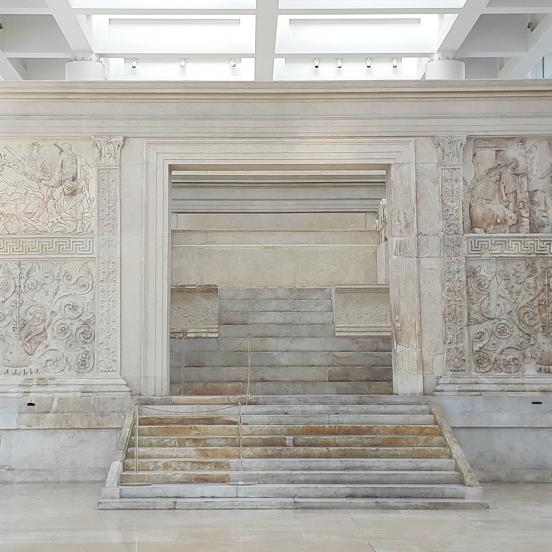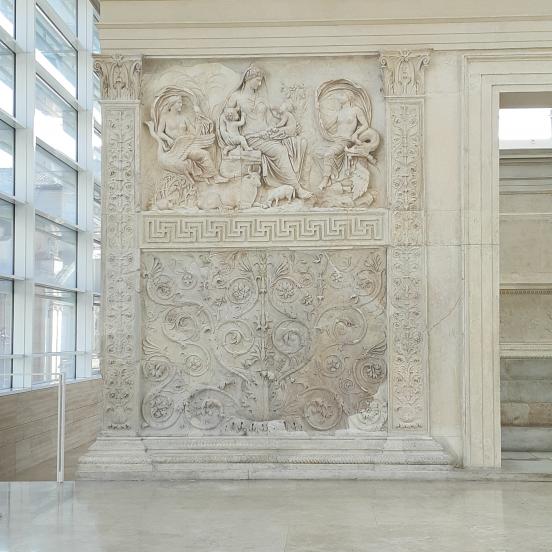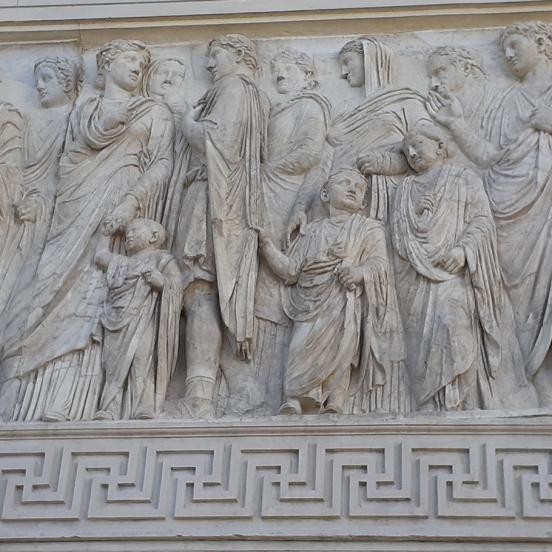Ara Pacis Augustae (Altar of Augustan Peace)
The Roman senate decided to construct the Ara Pacis following Augustus’s successful military campaign in Hispania in 13 B.C. Building the altar was actually a part of founding a new cult: following its dedication (January, 9 B.C.) the leaders and chief priestly bodies would offer a sacrifice to Pax, to Peace personified as a goddess. The epithet of the new goddess (Augusta) was identical with the honourable name (Augustus) of Octavianus, who in effect led the Roman state from 27 B.C. It means “majestic”, “divine” and “bringing growth”. The reliefs of the Ara Pacis Augustae had the same complex socio-political message dressed up in a religious guise in their own age as the name Augustus itself: civil wars came to an end, the Roman state extended to an ever increasing territory and the well-managed peace brought plenty, well-being, and a new golden age for the residents of the empire. This message is expressed “in coded language” by the decoration of motifs of nature including life-like plants and animals on the lower part of the exterior walls surrounding the altar. Its figurative ornaments also announce the same, Roman identity and its promise for the future: on two sides of the opening on the entrance façade the myths of Aeneas, as well as Romulus and Remus, can be seen each on a relief. On the rear façade on one side there is the goddess of Rome in full armour, while on the other side a panel features a goddess in fine clothing with two young children on her lap and surrounded by plants and animals. The key to its interpretation can perhaps be mostly found in this figure: it may portray personified Peace simultaneously with opulently productive land blooming in peace (Tellus) or, extending this interpretation, Italia. On the longer sides of the exterior walls the ritual procession of the annual peace festivity is depicted, and members of Augustus’s family and representatives of priestly bodies can be recognized.



